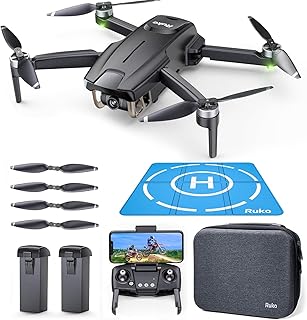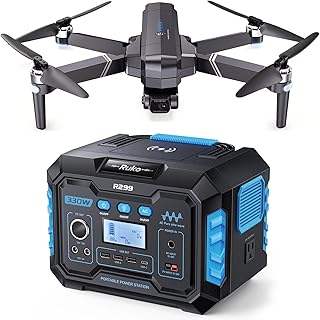Ruko Drone: How to Avoid Common Drone Flying Mistakes
Congratulations on your new Ruko drone! Like any new skill, flying a drone takes practice and a good understanding of the basics. Here are some common mistakes to avoid and tips for safe and successful drone flights:
1. Not Understanding the Laws & Regulations:
* Know your local laws: Every country and region has its own regulations for drone flying. Check your local government website or FAA website (for the USA) for specific rules on where and how you can fly.
* Respect privacy: Always obtain permission before flying over private property, especially near people.
* Maintain safe distances: Stay away from airports, restricted airspace, and sensitive areas like power plants or government buildings.
2. Not Checking the Weather Conditions:
* Wind: Strong wind can make controlling your drone difficult and can even damage it. Check wind speed and direction before taking off.
* Precipitation: Rain, snow, and fog can affect visibility and drone performance. Avoid flying in adverse weather conditions.
* Temperature: Extreme temperatures can affect battery life and drone performance. Fly in comfortable temperature ranges.
3. Not Familiarizing Yourself with the Drone Controls:
* Practice in a safe space: Before flying in public, practice flying in a large open area with no obstacles.
* Understand the controls: Familiarize yourself with the drone's controls, especially the throttle, yaw, pitch, and roll.
* Start slow: Begin with simple maneuvers and gradually increase complexity as you gain confidence.
4. Not Checking Battery Levels:
* Fully charge batteries: Always fully charge your drone battery before flying.
* Monitor battery levels: Keep an eye on the battery level and return to landing before it reaches a critical level.
* Spare batteries: Carry spare batteries for extended flying sessions.
5. Not Flying Responsibly:
* Keep it safe: Always keep your drone within your line of sight and maintain control at all times.
* Respect others: Be aware of your surroundings and avoid flying near people or animals.
* Be prepared for accidents: Things can happen, so have a plan for what to do if you lose control of your drone.
6. Not Properly Storing Your Drone:
* Keep it clean: Clean your drone regularly to remove dirt and debris.
* Store it safely: Store your drone in a dry, cool place, away from direct sunlight.
* Protect your batteries: Store batteries separately and at room temperature.
7. Not Taking Advantage of Features:
* Explore the features: Your Ruko drone may have features like automatic flight modes, obstacle avoidance, and camera settings.
* Practice using these features: Learn how to use them effectively to enhance your flying experience.
Remember, practicing patience, following guidelines, and respecting your surroundings will help you avoid mistakes and have a safe and enjoyable drone flying experience. Happy flying!


